What's New
Displaying results 3231 - 3240 of 4914

Resource | Guidelines,
This document was developed in response to the increase in HIV-related human rights crises in recent years in countries around the world and the need for guidance for country-based United Nations (UN) staff in determining how best to respond to these events. It is based on a 2012 guidance note prepared by the UNAIDS Secretariat for its staff. This expanded guidance is primarily intended for members of Joint UN Country Teams on AIDS (UNAIDS co-sponsoring organizations, UNAIDS Secretariat and other relevant UN partners). It will also be of interest to staff members of other international organizations who are concerned about or may need to contribute to a crisis response, such as international donors/development partners, representatives of foreign diplomatic missions and civil society groups.

Resource | Laws and Policies,
This guideline is developed to ensure safe and effective use of Antiretroviral therapy (ART) for people living with human immunodeficiency virus (PLHIV). It is a local adaptation of the WHO Consolidated Guidelines on the use of antiretroviral drugs for treating and preventing HIV infection released in June 2013.
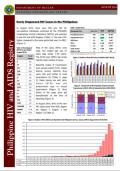
Resource | Fact Sheets,
In August 2014, there were 509 new HIV Ab seropositive individuals confirmed by the STD/AIDS Cooperative Central Laboratory (SACCL) and reported to the HIV and AIDS Registry (Table 1). This was 33% higher compared to the same period last year (n=382). [Figure 1].
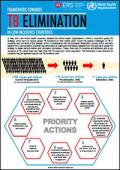
Resource | Fact Sheets,
In May 2014, the World Health Assembly adopted the World Health Organization’s (WHO’s) post-2015 global TB strategy, which aims to reduce global TB incidence by 90% before 2035. Given the special challenges of TB in countries with low levels of the disease, WHO in collaboration with the European Respiratory Society (ERS), and with experts from low-incidence countries has developed an eight-point framework adapted from the post-2015 global TB strategy to target pre-elimination and, ultimately, elimination. Today, there are 33 countries and territories with a low incidence of TB, where there are fewer than 100 TB cases per million population. The framework is also relevant for countries that are approaching the low TB incidence level.
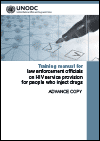
Resource | Publications,
In order to reach the overall objectives, the Training Manual includes 8 practical training modules. Each module is introduced with a brief background to the topic and the purpose for its inclusion in the training. Modules also contain learning objectives, suggested readings, case studies and fact sheets. A series of slide by slide instructors’ notes and accompanying Power Point slide presentations for each module will assist LE trainers deliver each of the modules.
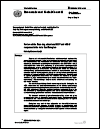
Resource | Publications,
The document contains highlights of a number of key actions and policy responses to be taken at the national and regional levels, including undertaking evidence-based HIV investment cases and sustainability plans, as well as steps to ensure affordable access to essential drugs.
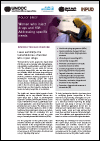
Resource | Publications,
This policy brief aims to promote the realization of gender equality and human rights in terms of an effective harm reduction response to HIV for women who inject drugs in community and prison settings. It outlines a framework to achieve that goal which focuses on improving the availability, accessibility, affordability and acceptability of women-oriented harm reduction interventions. Suggested good practice tools and guidance are also provided.
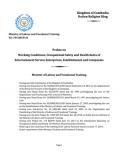
Resource | Laws and Policies,
This Prakas is aimed at regulating employers of entertainment service enterprises, establishments and companies to properly and comprehensively implement the Labour Law.
The objectives of this Prakas include:
- Strengthening the implementation of the Labour Law without any discrimination;
- Clarify the Labour Law implementation obligations by employers towards entertainment workers;
- Sensitize entertainment workers on the duties, rights and benefits as stated in the Labour Law;
- Improve relationship between employers and entertainment workers according to the Labour Law;
- This Prakas covers all entertainment service enterprises, establishment and companies across the Kingdom of Cambodia.

Resource | Publications,
The ASEAN Forum on Migrant Labour (AFML) is the only known migration forum in Asia that brings together key stakeholders in labour migration in the ASEAN, including government, employers and workers' organizations- as well as the ASEAN Secretariat, civil society and international organizations such as the International Labour Organization (ILO).
This document is a summary report of the Post 6th ASEAN Forum on Migrant Labour GMS Consultation Workshop on good practice to improve existing complaint mechanism held on 15-16 August 2014 at Phnom Penh, Cambodia.
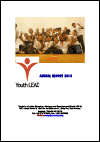
Resource | Publications,
2013 had seen many of Youth LEADers actively advocating for human rights, and needs in various forums, and platforms. Youth LEAD became the first youth organization to co-chair the Asia Pacific Interagency Task Team (IATT) on Young Key Populations along with UNAIDS n 2013. The IATT was fundamental in supporting development of the New Gen Asia Initiatives and a significant avenue to universalize the issue of YKP in Asia and the Pacific.





